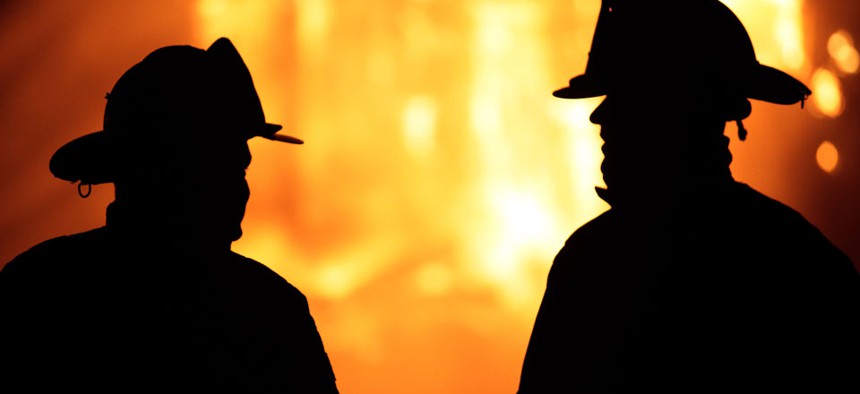Why Firefighters Are Scared of Solar Power

John Hanley/Shutterstock.com
A 300,000 square foot warehouse burned down, and the local fire department says solar panels are partly to blame.
A 300,000 square foot refrigerated warehouse in Delanco, New Jersey, burned down last week, and the local fire chief says solar panels are partly to blame. No, the 700 solar panels on top of the Dietz & Watson warehouse didn't cause the fire, but their presence did dissuade Delanco Fire Chief Ron Holt from putting his team on the roof. "With all that power and energy up there, I can't jeopardize a guy’s life for that,” Holt told NBC Philadelphia. The only thing firefighters fear more than fire is solar.
So long as a solar panel is getting sunlight, it's impossible to turn off. "During daylight, there can be enough voltage and current to injure or even kill a firefighter who comes in contact with the energized conductors," Matthew Paiss, a fire engineer with the San Jose Fire Department,wrote in a handy guide for firefighters. The Dietz & Watson warehouse fire started when the sun was out. By the time the sun went down, the fire was beyond control. The warehouse burned for 29 hours.
As Paiss explained in his essay on solar panels and firefighting, roof access is crucial for firefighters:
In a house fire, superheated smoke and gases (which can exceed 1,200°F) rise to the ceiling and then bank down back to the floor. Just one lungful of this smoke can kill. Cutting a hole in the highest point of the room allows the superheated gases and fire to rise out of the building, rapidly improving visibility as well as the survivability of the structure and those trapped inside. This also allows firefighters on the hose line to advance inside to locate the seat of the fire and any victims. This “vertical ventilation” has saved many lives and valuable property—besides actual rescue, this is one of a firefighter’s primary responsibilities.
But the presence of rooftop-mounted PV arrays has made cutting through a roof more challenging. In the past, the fire service had plenty of room to ventilate where it is most effective—directly above the fire. With PV arrays now covering large areas of roofs, firefighters are limited in where they can cut and where they can exit the roof. Since the PV modules cannot be cut through, and moving them is time-consuming and potentially dangerous, rooftop PV systems pose some risks—mainly shock and trip hazards.
Read more at The Atlantic Cities.
(Image via John Hanley/Shutterstock.com)
NEXT STORY: Justice Department Websites May Go Open Source





